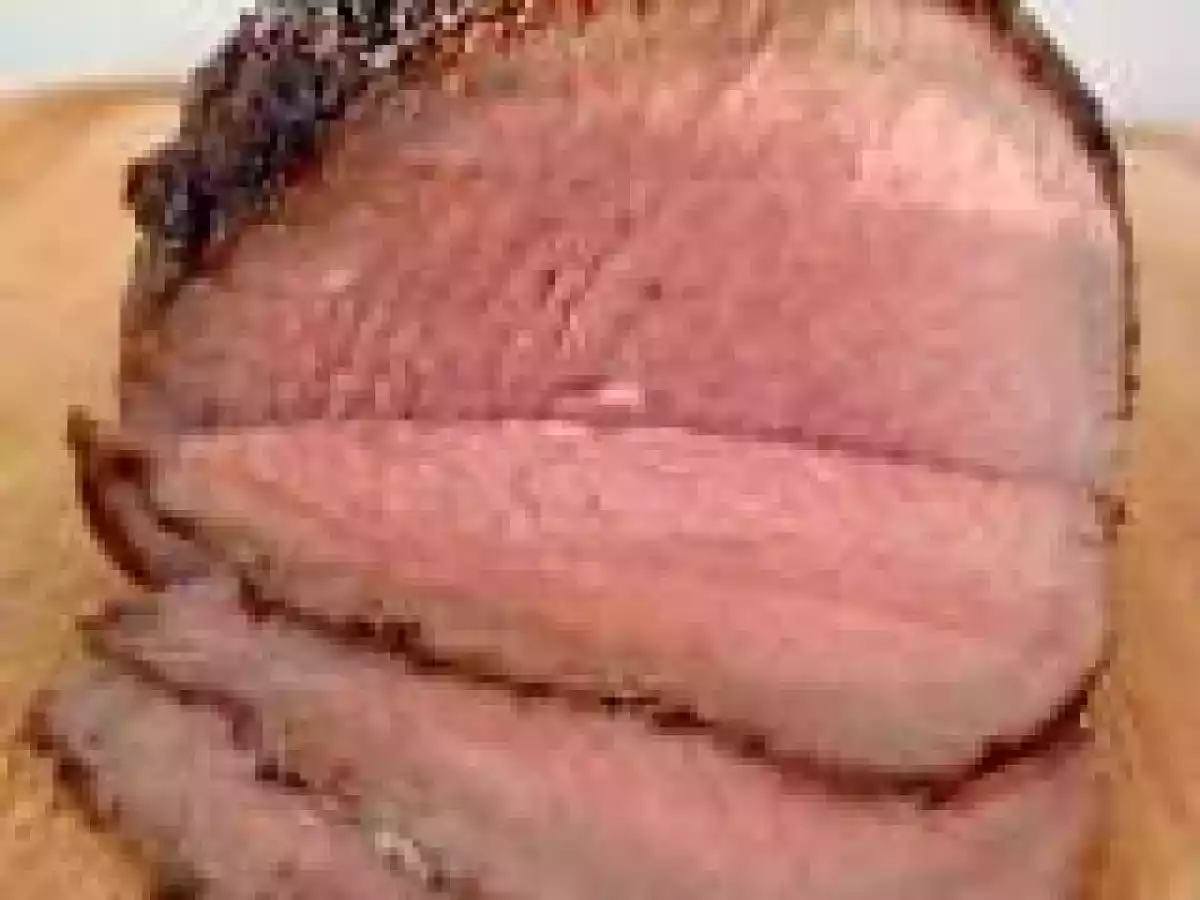Slow Roasted Beef (Cook's Illustrated)



While flipping through one of my many Cook's Illustrated cookbooks, this version of Slow Roasted Beef(January 2008) caught my attention. I always enjoy reading the article that precedes their recipes because Cook's Illustrated does a lot of homework to perfect each recipe-- and I have to say that I have yet to be disappointed. Here's a portion of the article, so that you can understand why this recipe worked:
First step: selecting the best cut for our roast. Our favorite, the eye-round, has good flavor and tenderness and a uniform shape that guarantees even cooking. Next step: choosing between the two classic methods for roasting meat?high and fast or low and slow. Low temperature was the way to go. Keeping the meat's internal temperature below 122 degrees as long as possible allowed the meat's enzymes to act as natural tenderizers, breaking down its tough connective tissue (this action stops at 122 degrees). Since most ovens don't heat below 200 degrees, we needed to devise a special method to lengthen this tenderizing period. We roasted the meat at 225 degrees (after searing it to give the meat a crusty exterior) and shut off the oven when the roast reached 115 degrees. The meat stayed below 122 degrees an extra 30 minutes, allowing the enzymes to continue their work before the temperature reached 130 degrees for medium-rare. Final step: seasoning. Salting the meat a full 24 hours before roasting made it even more tender and seasoned the roast throughout. I made this recipe several months ago, but I wasn't thrilled with the photos. Since I'm home, healing from a winter cold, I'm editing some of the numerous food photos that I've been too busy to work on. I'm going to make this again, so I thought I'd share it with you-- overexposed photos and all...


Sprinkle all sides of roast evenly with salt. Wrap with plastic wrap and refrigerate 18 to 24 hours.


Turn oven off; leave roast in oven, without opening door, until meat-probe thermometer or instant-read thermometer inserted into center of roast registers 130 degrees for medium-rare or 140 degrees for medium, 30 to 50 minutes longer.

I have to say that my therma pen

Slice meat crosswise as thinly as possible and serve. The beef was juicy and flavorful. Next time, I'm adding garlic powder or my Susie-Q seasoningto give it more of an Italian flair.
This would be excellent served with creamy mashed potatoes and peas-- how traditional is that? This roast beef was destined for sandwiches....

I'm not thrilled with how the sandwich photo turned out. You'll have to take my word that I am very pleased to be able to make my own roast beef, at home. My hat's off to Cook's Illustrated. This one is a winner. In a way, this beef reminds me of the Santa Maria Tri-Tiprecipe (without the unique smokey flavor) that I got from Cook's Illustrated. It's too cold to grill, so an oven method like this is a great winter substitute. A printable recipe is at the bottom of this post.
From my kitchen to yours,
From my kitchen to yours,

JUMP to my blog site to view and print these recipes, please!
A Feast for the Eyes
Comments